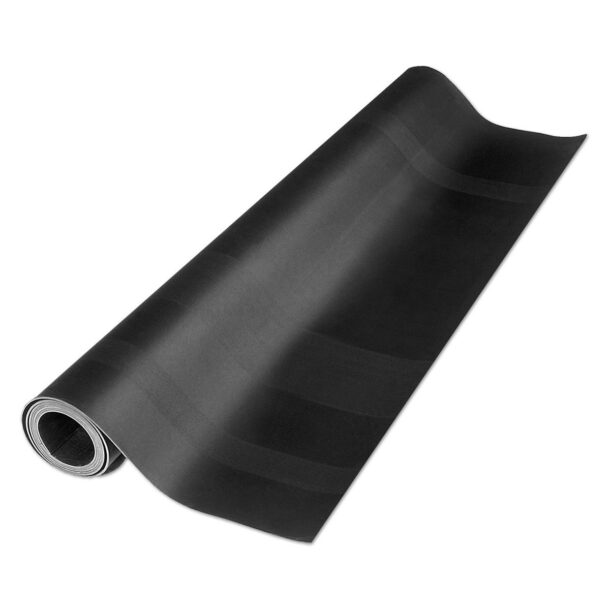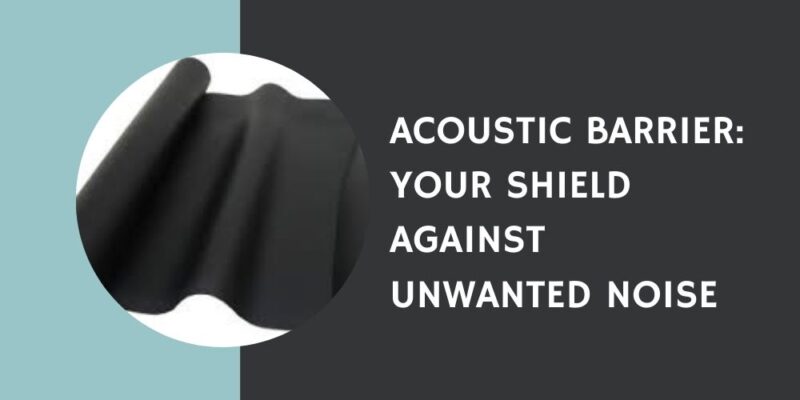Introduction
In a world where noise seems to be an ever-present companion, the quest for peace and quiet is a common endeavor. Whether you reside in a bustling city or a serene suburb, unwanted noise can invade your space and disrupt your peace. Enter the Acoustic Barrier – a simple yet highly effective solution to mitigate noise pollution. In this comprehensive guide, we’ll delve into what acoustic barriers are, how they work, and the various applications that can help you achieve tranquility in your surroundings.
What Is an Acoustic Barrier?
An acoustic barrier, often referred to as a sound barrier or noise barrier, is a specially designed structure or material crafted to reduce or block the transmission of sound. These barriers act as shields, intercepting sound waves and preventing them from traveling to unwanted areas.
How Does an Acoustic Barrier Work?
Understanding the science behind acoustic barriers is crucial to appreciate their efficacy:
1. Sound Absorption
- Acoustic barriers are made from materials that possess sound-absorbing properties. When sound waves strike the barrier, these materials absorb the sound energy, converting it into heat energy. This absorption process reduces noise levels significantly.
2. Sound Reflection and Deflection
- Some acoustic barriers are designed to reflect or deflect sound waves away from a specific area. By changing the direction of sound, these barriers help protect designated zones from unwanted noise.

Benefits of Acoustic Barriers
The advantages of incorporating acoustic barriers into your environment are numerous:
1. Noise Reduction
- The primary benefit is noise reduction. Acoustic barriers can significantly decrease the impact of external noise, creating a quieter and more comfortable space.
2. Improved Privacy
- These barriers are effective in maintaining privacy by preventing conversations or confidential information from being overheard in adjacent spaces.
3. Enhanced Concentration
- Acoustic barriers create quieter environments, promoting better concentration and focus in settings like offices, classrooms, and study areas.
4. Improved Sleep Quality
- In residential areas, acoustic barriers can ensure a good night’s sleep by blocking out disturbances from traffic or neighbors.
Types of Acoustic Barriers
Acoustic barriers come in various forms, each suitable for specific applications:
1. Outdoor Noise Barriers
- These are large, often wall-like structures placed outdoors along highways, railways, or industrial areas to block noise from reaching nearby residential or commercial spaces.
2. Indoor Acoustic Panels
- Acoustic panels are used indoors in spaces like offices, studios, and homes. They are versatile and can be wall-mounted or suspended from ceilings to absorb sound.
3. Floor and Ceiling Insulation
- In buildings, acoustic insulation materials can be installed within floors and ceilings to reduce noise transmission between different levels or rooms.
4. Soundproof Curtains
- Soundproof curtains are heavy, dense curtains designed to block external noise from entering indoor spaces, making them ideal for bedrooms and living areas.
Applications of Acoustic Barriers
Acoustic barriers find applications in a wide range of settings:
1. Transportation
- Along highways, railways, and airports, outdoor noise barriers are crucial to reducing noise pollution for nearby residents.
2. Industrial Areas
- Factories and manufacturing facilities use acoustic barriers to protect workers and nearby communities from the noise generated by heavy machinery.
3. Commercial Spaces
- Offices, conference rooms, and open workspaces benefit from indoor acoustic barriers to create quieter and more productive environments.
4. Educational Institutions
- Schools and universities install acoustic barriers in classrooms, libraries, and lecture halls to create optimal learning conditions and reduce distractions.
Choosing the Right Acoustic Barrier
Selecting the appropriate acoustic barrier for your needs involves considering several factors:
1. Type of Noise
- Identify the source of noise you wish to control, whether it’s outdoor traffic, machinery, or indoor conversations.
2. Location
- Determine the specific areas or rooms where noise control is required, as different spaces may benefit from different types of barriers.
3. Budget
- Set a budget for your noise control project, as the cost of acoustic barriers can vary depending on the type and quantity required.
4. Aesthetic Considerations
- Consider the visual impact of acoustic barriers and whether they need to blend seamlessly with your existing decor.
Also read our other blog :- Acoustic Panels Suppliers in UAE: Your Sound Solution Partners
Conclusion
Acoustic barriers are your allies in the quest for peace and quiet in a noisy world. Whether you’re looking to create a serene home, a focused workspace, or a peaceful outdoor area, these barriers can significantly improve the acoustic comfort of any environment. As you explore the world of acoustic barriers, remember that the key to tranquility lies in the power to absorb, reflect, or deflect sound. So, take the step towards a quieter and more enjoyable space today and shield yourself from unwanted noise with an acoustic barrier.
Discover the hidden strategies for choosing Acoustic Barriers that not only excel in noise reduction but also meet local regulations seamlessly, as unveiled in the comprehensive guide provided by EmperiorTech.









